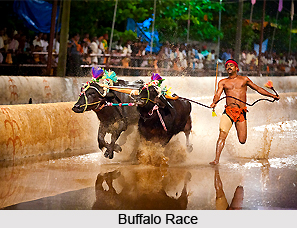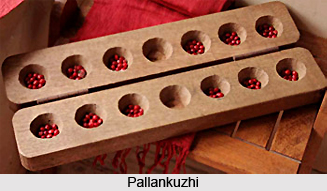 History of Gatka greatly suggests that after the second Anglo-Sikh War from 1848 to 1849 and the establishment of British Raj, this form of sport suffered greatly. The British were always very wary of the Punjabis; hence order a proper disarmament of entire community of Sikhs. The process went to such an extent that even tools and farming equipments were banned. The Akali Nihang, considered the keepers of all Sikh traditions, was regarded as unfaithful to the colonist. More than 1, 500 nihang were killed by the British for plotting rebellion. According to the folklore, some actually escaped and spent the rest of the lives the northern mountains.
History of Gatka greatly suggests that after the second Anglo-Sikh War from 1848 to 1849 and the establishment of British Raj, this form of sport suffered greatly. The British were always very wary of the Punjabis; hence order a proper disarmament of entire community of Sikhs. The process went to such an extent that even tools and farming equipments were banned. The Akali Nihang, considered the keepers of all Sikh traditions, was regarded as unfaithful to the colonist. More than 1, 500 nihang were killed by the British for plotting rebellion. According to the folklore, some actually escaped and spent the rest of the lives the northern mountains.
Shastar Vidya was always considered to be important for military training for Sikh warriors. As per oral tradition, Guru Nanak was called to the divine court of God where, along with receiving holy teaching ("guru mantar" or "wahe guru"), he also received Shastar Vidya. Nihangs also believe that Guru Nanak passed the knowledge of martial art on to his disciple, Baba Buddha, with the stated intention of claiming it back in his sixth form. It was actually the sixth guru, named Hargovind, who received the technique of gatka and art of gatka, along with the skills, from Baba Buddha at an early age. The old saint also trained an army of twenty two hundred "saint soldiers" of Akal Bunga (the "Immortal" Fort, built in 1606) ... and they came to be known as the Akalis (Immortals).
The army of Akali was called as Akal Fauj, but, informally, was called Buddha Dal or the army of Baba Buddha. Its main function was to defend the ideology of Sikhism and all those who sought the protection of Sikhs from the then cruel Mughal Empire that had by then tortured, tormented and executed Arjan - the fifth guru. It was actually, Guru Har Gobind, his son, along with his army of Akalis, who fought with the British forces in four battles and also gained victory on each given occasion.
 With succeeding gurus after Har Gobind, the Akal Fauj was maintained and looked after in its original form until the time of tenth guru, Guru Gobinnd Singh. After some time before the creation of Khalsa in 1699, he altered its structure with the effect that, from then on, only a high ranking soldier was to be known as an Akali. As a result a low ranking soldier was appointed as Nihang, or as one who is neither attached to life nor fears death. He was very quick to realize that in order to defend Sikhism, it would not be enough just to rely on the Akal Fauj. Hence, he decided to make the entire Sikh nation (with the exception of certain groups such as the Udasis, Seva Panthis and Nirmalas) into a martial nation. Thus, in 1699, the Khalsa came into being. After the death of Guru Gobind Singh, it was a triumphant Khalsa, led by Akalis, who fought a life and death battle for close to hundred years against the Mughal Rulers and the invading Afghans. They freed a number of independent kingdoms all through Punjab, by the end decades of the 18th century.
With succeeding gurus after Har Gobind, the Akal Fauj was maintained and looked after in its original form until the time of tenth guru, Guru Gobinnd Singh. After some time before the creation of Khalsa in 1699, he altered its structure with the effect that, from then on, only a high ranking soldier was to be known as an Akali. As a result a low ranking soldier was appointed as Nihang, or as one who is neither attached to life nor fears death. He was very quick to realize that in order to defend Sikhism, it would not be enough just to rely on the Akal Fauj. Hence, he decided to make the entire Sikh nation (with the exception of certain groups such as the Udasis, Seva Panthis and Nirmalas) into a martial nation. Thus, in 1699, the Khalsa came into being. After the death of Guru Gobind Singh, it was a triumphant Khalsa, led by Akalis, who fought a life and death battle for close to hundred years against the Mughal Rulers and the invading Afghans. They freed a number of independent kingdoms all through Punjab, by the end decades of the 18th century.
Even when in the hard fought "Anglo-Sikh Wars" (1845-46 and 1848-49), the famous Sikh rule of Maharaja Ranjit Singh fell to the British, large number of Sikhs to this date know it was not the martial prowess of their ancestors that let the nation down. History proves, unequivocally, the fact that the Sikh army actually won on the battle-fields but lost the wars, due to the betrayal of their treacherous Dogra generals.
 During the revolt of 1857, the Sikhs helped the British in dislodging the mutiny. As a result of this help, restrictions on fighting practises were actually relaxed, but Sikh martial arts which re-emerged after 1857 had changed drastically. The new style applied the technique of sword fighting to the wooden training stick. It was called the gatka, after its primary weapon. The martial art technique, Gatka, was mainly used by the British Indian Army in the 1860s as practise for hand to hand fight. With the opening of the Sikh colleges during 1880s, Europeans rules of fencing were also applied to create what is now known as khel or sport gatka. The other weapon and technique of conventional shaster vidiya were taught to experienced students as rasmi or ritual.
During the revolt of 1857, the Sikhs helped the British in dislodging the mutiny. As a result of this help, restrictions on fighting practises were actually relaxed, but Sikh martial arts which re-emerged after 1857 had changed drastically. The new style applied the technique of sword fighting to the wooden training stick. It was called the gatka, after its primary weapon. The martial art technique, Gatka, was mainly used by the British Indian Army in the 1860s as practise for hand to hand fight. With the opening of the Sikh colleges during 1880s, Europeans rules of fencing were also applied to create what is now known as khel or sport gatka. The other weapon and technique of conventional shaster vidiya were taught to experienced students as rasmi or ritual.
The system actually devised by Captain Eric Anthony Sykes and Captain William Ewart Fairbairn adapted methodologies from gatka, jujutsu, Chinese martial arts and "gutter fighting. This method was used to train soldiers in close-combat techniques at the Commando Basic Training Centre in Achnacarry, Scotland.
There was a sharp difference between underdeveloped and pluralistic phase (comprising in the main of Udassis, Seva Panthis, Nirmalas and Akali Nihang Singhs) and the rebirth which was later started, supported and encouraged by Tat Khalsa and the Singh Sabha Movement.



















